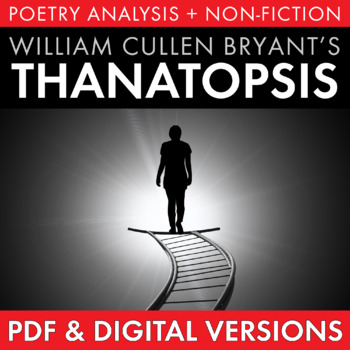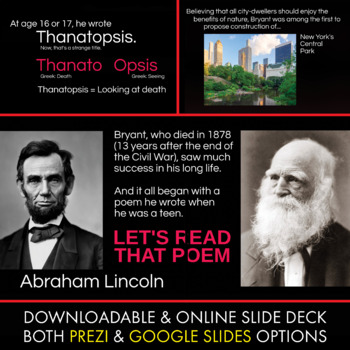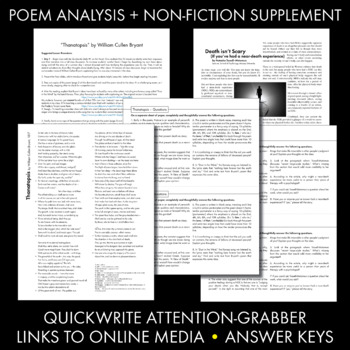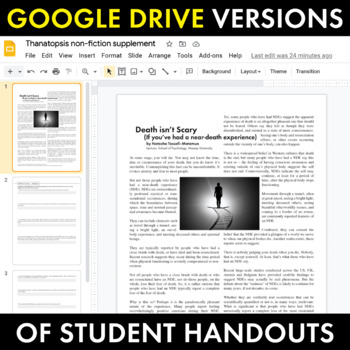Thanatopsis, William Cullen Bryant, Multimedia Poem Analysis, PDF & Google, CCSS
- Zip
- Google Apps™

What educators are saying
Description
Take a challenging poem and it make it far more accessible with these dynamic multimedia materials that will help students build connections between our modern world and the 1817 thoughts of American poet William Cullen Bryant.
Romanticism poetry can be tough for today’s teens to master, but linking a poem’s themes to students’ own lives and popular media helps create a much richer experience. These print/post-and-teach materials do just that!
This lesson, which will take at least two class periods to complete, includes:
• A step-by-step lesson plan with helpful tips and advice. (This lesson could be left for a substitute teacher, too, as everything is clearly explained.)
• A Quickwrite topic to hook students’ attention
• A 16-slide lecture introducing William Cullen Bryant and providing some historical context of the man's work and his era (Prezi, Google Slides, and PDF versions included)
• A single-sheet copy of Bryant’s poem, “Thanatopsis,” with helpful footnotes and space to annotate
• Video links to a famous song that also employs the same theme as found in “Thanatopsis”
• A handout of close-reading, text-dependent questions for students to answer as a solo assignment or in teams of two
• A high-interest informational text article about near-death experiences
• A handout of homework or discussion questions to accompany the informational text/non-fiction article
• Detailed answer keys for all materials to make grading easy and/or help guide class discussion
A total of 7 pages and 16 slides. All student handouts download as both printable PDFs and Google Drive versions.
Click the “Preview” button at the top of the page to take a closer look at these “Thanatopsis” materials. I hope you enjoy this fresh approach to the poem that’s sure to keep your students’ attention.
Want to extend this lesson to include a student-driven research activity about Bryant's interesting life? Click here for a printable PDF + Google Drive worksheet/research activity.
Thanks for stopping by!
Cover image credit: Pixabay, Public domain





